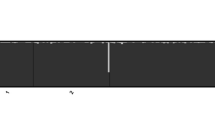Abstract
Purpose
Feral oilseed rape has become widespread in Europe on waysides and waste ground. Its potential as a source of GM impurity in oilseed rape harvests is quantified, for the first time, by a consistent analysis applied over a wide range of study areas in Europe.
Methods
The maximum contribution of feral oilseed rape to impurities in harvested crops was estimated by combining data on feral abundance and crop yield from five established, demographic studies in agricultural habitats in Denmark, Germany (2), France and the UK, constituting over 1,500 ha of land and 16 site-years of observations. Persistence of feral populations over time was compared by visual and molecular methods.
Results
Ferals had become established in all regions, forming populations 0.2 to 15 km−2. The seed they produced was always <0.0001% of the seed on crops of oilseed rape in each region. The contribution of ferals to impurity in crops through accidental harvest of seed and through cross-pollination would be an even smaller percentage. Feral oilseed rape nevertheless showed a widespread capacity to persist in all regions and retain traits from varieties no longer grown.
Conclusions
Feral oilseed rape is not a relevant source of macroscopic impurity at its present density in the landscape but provides opportunity for genetic recombination, stacking of transgenes and the evolution of genotypes that under strong selection pressure could increase and re-occupy fields to constitute an economic weed burden and impurity in future crops.
Similar content being viewed by others
References
Andersen NS, Rasmussen J, Jørgensen RB (2009) You reap what you sow—or do you?—volunteers in organic row-sown and broadcast-sown oilseed rape fields. Eur J Agron 32:121–126. doi:10.1016/j.eja.2009.09.001
Charters YM, Robertson A, Wilkinson MJ, Ramsay G (1996) PCR analysis of oilseed rape cultivars (Brassica napus L. ssp. oleifera) using 5′ anchored simple sequence repeat (SSR) primers. Theor Appl Genet 92:442–7
Charters YM, Robertson A, Squire GR (1999) Investigation of feral oilseed rape populations: genetically modified organisms research report No. 12. Defra, London
D’Hertefeldt T, Jorgensen RB, Petersson LB (2008) Long-term persistence of GM oilseed rape in the seedbank. Biol Lett 4:314–317. doi:10.1098/rsbl.2008.0123
Demont M, Devos Y (2008) Regulating coexistence of GM and non-GM crops without jeopardizing economic incentives. Trends Biotechnol 26:353–358
Devos Y, Demont M, Dillen K, Reheul D, Kaiser M, Sanvido O (2009) Coexistence of genetically modified (GM) and non-GM crops in the European Union. A review. Agron Sustainable Dev 29:11–30
Dietz-Pfeilstetter A, Metge K, Schönfeld J, Zwerger P (2006) Assessment of transgene spread from oilseed rape by population dynamic and molecular analyses of feral oilseed rape. J Plant Dis Protect XX:39–47
Elling B, Neuffer B, Bleeker W (2009) Sources of genetic diversity in feral oilseed rape (Brassica napus) populations. Basic Appl Ecol 10:544–553. doi:10.1016/j.baae.2009.01.005
Hüsken A, Dietz-Pfeilstetter A (2007) Pollen mediated intraspecific gene flow from herbicide resistant oilseed rape (Brassica napus L.). Transgenic Res 16:557–569
Kawata M, Murakami K, Ishikawa T (2009) Dispersal and persistence of genetically modified oilseed rape around Japanese harbors. Environ Sci Pollut R 16:120–126
Knispel AL, McLachlan SM (2009) Landscape-scale distribution and persistence of genetically modified oilseed rape (Brassica napus) in Manitoba, Canada. Environ Sci Pollut R. doi:10.1007/s11356-009-0219-0
Menzel G (2006) Verbreitungsdynamik und Auskreuzungspotenzial von Brassica napus L (Raps) im Grossraum Bremen: Basiserhebung zum Monitoring von Umweltwirkungen transgener Kulturpflanzen. GCA, Waabs
Messéan A, Squire GR, Perry JN, Angevin F, Gómez-Barbero M, Townend D, Sausse C, Breckling B, Langrell S, Džeroski S, Sweet JB (2009) Sustainable introduction of GM crops into European agriculture: a summary report of the FP6 SIGMEA research project. Ol Corps Gras, Lipides 16:37–51
Pessel FD, Lecomte J, Emeriau V, Krouti M, Messean A, Gouyon PH (2001) Persistence of oilseed rape (Brassica napus L.) outside of cultivated fields. Theor Appl Genet 102:841–846
Pivard S, Adamczyk K, Lecomte J, Lavigne C, Bouvier A, Deville A, Gouyon PH, Huet S (2008) Where do the feral oilseed rape populations come from? A large-scale study of their possible origin in a farmland area. J Appl Ecol 45:476–485
Reuter H, Menzel G, Pehlke H, Breckling B (2008) Hazard mitigation or mitigation hazard? Would genetically modified dwarfed oilseed rape (Brassica napus) increase feral survival? Environ Sci Pollut R 15:529–535
Acknowledgements
The EU FP6 project SIGMEA funded this comparison of demographic studies.
Author information
Authors and Affiliations
Corresponding author
Additional information
Responsible editor: Elena Maestri
Rights and permissions
About this article
Cite this article
Squire, G.R., Breckling, B., Dietz Pfeilstetter, A. et al. Status of feral oilseed rape in Europe: its minor role as a GM impurity and its potential as a reservoir of transgene persistence. Environ Sci Pollut Res 18, 111–115 (2011). https://doi.org/10.1007/s11356-010-0376-1
Received:
Accepted:
Published:
Issue Date:
DOI: https://doi.org/10.1007/s11356-010-0376-1




